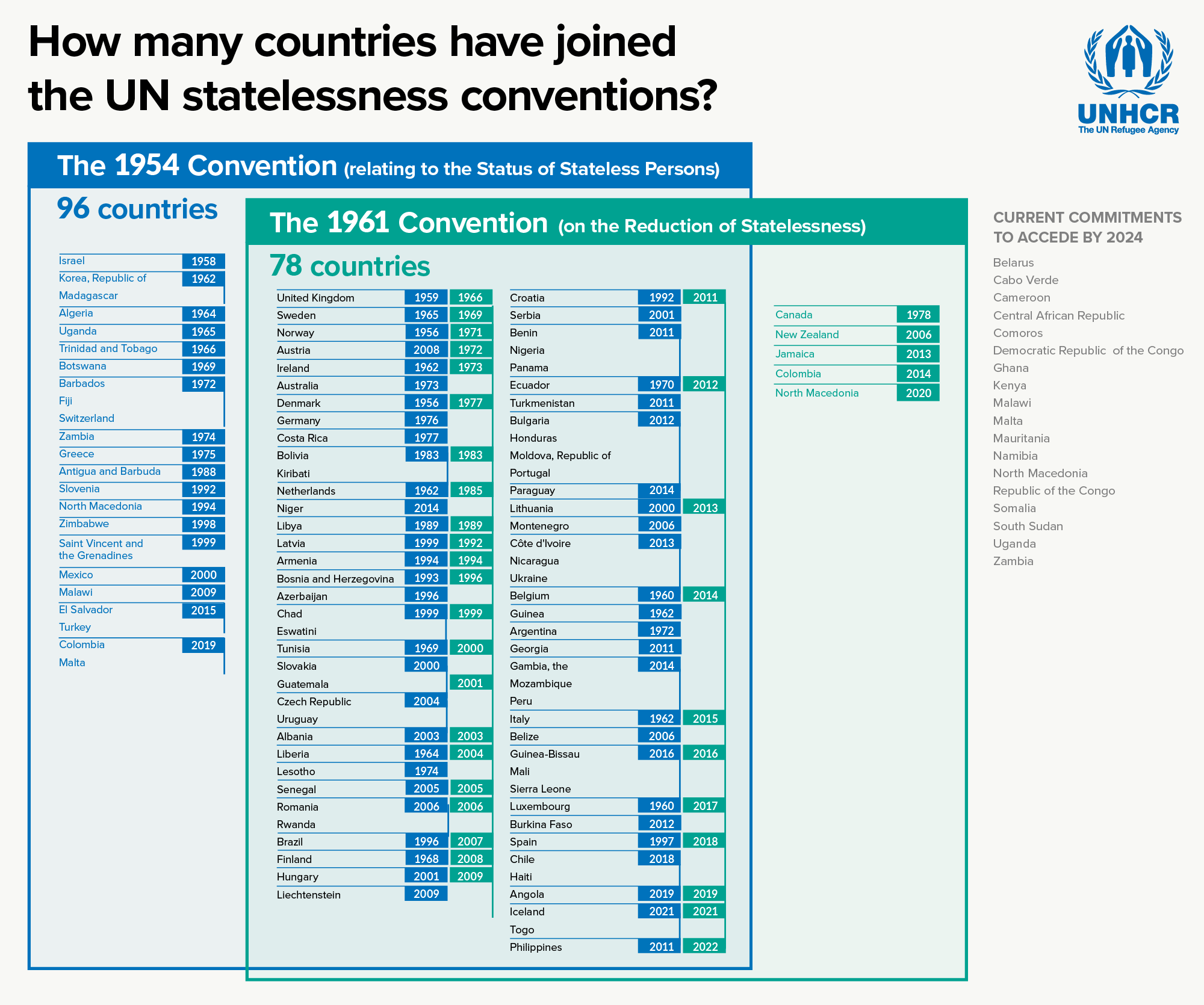The dissolution of the USSR led thousands to be stateless. Kyrgyzstan granted citizenship to all known stateless people in 2019, confirming nationality for multiple generations of families. ©UNHCR/Chris de Bode
Sixty years ago, on 30 August 1961, the Convention on the Reduction of Statelessness was adopted, becoming one of two treaties which form the foundation of the international legal framework to address statelessness. The 1961 Convention is the unique international treaty designed to prevent cases of statelessness from arising.
In this anniversary year, UNHCR encourages all States that are not yet party to the 1961 Convention to accede.
In addition to the 1961 Convention, the 1954 Convention Relating to the Status of Stateless Persons is the complementary international agreement that sets out the definition of a stateless person and provisions designed to improve the status of stateless persons by ensuring that they are accorded fundamental rights and freedoms without discrimination.

The 1961 Convention is the leading international instrument that sets out rules for the conferral and non-withdrawal of citizenship to prevent cases of statelessness from arising.
By setting obligations for States to limit the occurrence of statelessness, the Convention puts into practice Article 15 of the Universal Declaration of Human Rights which recognizes that “everyone has the right to a nationality.”
What are the main provisions of the 1961 Convention?
The 1961 Convention on the Reduction of Statelessness includes 10 articles which provide concrete and detailed safeguards to be implemented by States in order to prevent and reduce statelessness in these four main areas:
- Measures to avoid statelessness among children
- Measures to avoid statelessness due to loss or renunciation of nationality
- Measures to avoid statelessness due to deprivation of nationality
- Measures to avoid statelessness in the context of State succession
If applied by all States, the safeguards set out in the 1961 Convention would serve to help ensure that no child is born stateless and no adult is rendered stateless, which would ultimately support the eradication of statelessness.
Stateless for decades, more than 1600 Shona community members were confirmed as citizens of Kenya in 2020, and birth certificates issued for Shona children. © UNHCR/Georgina Goodwin
WHAT DOES IT MEAN FOR A STATE TO ACCEDE TO THE CONVENTION?
Acceding to the 1961 Convention
-
Is a way for States to demonstrate their commitment to human rights and humanitarian standards, including the right to a nationality.
-
Enables States to address gaps that result from different approaches to the attribution of nationality worldwide and to apply common safeguards for the avoidance of statelessness, without unduly restricting States’ ability to regulate nationality matters.
-
Helps prevent displacement by promoting enjoyment of the right to a nationality, and the rights associated with citizenship: access to legal employment, education, health care, to own property and vote, for example.
-
Enhances national security and stability by avoiding exclusion and marginalisation resulting from statelessness.
-
Promotes the full participation of individuals in society by ensuring access to political rights and processes, and ensuring the unrestricted right to enter and reside in a country, among other rights.
By registering indigenous communities and providing birth certificates for children, Costa Rica confirmed their right to nationality and with it, access to education. © UNHCR/Lucas Iturriza
